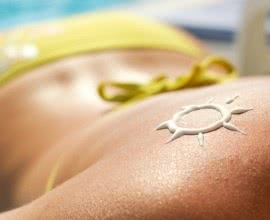Types of Rhinoplasty, Part 2
Joining us for the second time, or just interested in the more complex side of rhinoplasty? In our last article we covered the basic open and closed rhinoplasty operations, but here we are looking at the terms revision and filler when it comes to the procedure. Allow us to cover the basics and give you peace of mind in the hard search for the right surgery for you.

Commonly you will find online the 'revision' rhinoplasty. Don't be confused – this simply refers to a secondary procedure following an initial operation. The secondary procedure will likely be done using the open or closed method, the only difference being that is addresses potential problems that may have occurred in the first instance. Unfortunately there are many patients who are dissatisfied with their first operations, and there are even reports of people having up to 7 sessions to achieve the desired look. More seriously, issues that can occur in any open or closed rhinoplasty include removal of too much cartilage or bone, or inhibited breathing. To correct these things the doctor performing revision rhinoplasty may harvest bone or tissue from other parts of the body, such as the ear or temple, and use these to bolster the damaged areas (4). Patients must be certain that the revision doctor is fully qualified and provide full details of their previous operation. Rhinoplasty is a difficult surgery alone, so as a secondary procedure the technical skill required is even higher in these cases.
The second very common procedure worth mentioning is the filler rhinoplasty. In terms of comparison to the two from our first article, it is closest to the closed rhinoplasty in that it achieves minor aesthetic alterations to the nose. However in other respects it is very different, primarily in that it does not require surgical skills. No incisions are made and no existing parts of the nose are removed or shaped, instead a chemical that fills-out the nose is injected in the problem areas (5). This is the simplest of the procedures we have mentioned, and can even be done by dermatologists rather than in a cosmetic surgery. This is recommended mostly for patients who require small changes, and not major aesthetic alterations in shape or form. There are some downsides to the technique which must be mentioned, for example it is not necessarily permanent. The chemicals (Restalyne or Juvederm commonly) are eventually absorbed by the nose, eliminating their effect and requiring a top-up in the future. Furthermore, doctors often warn that it could cause problems if not administered correctly, potentially causing necrosis of the skin by obstructing circulation (6). On the plus side, this is a highly sought-after surgery with some clear benefits. It is a 'quick-fix', requiring no anaesthesia and little to no pain during injection. Results appear very quickly and the recovery time is unbeatable. It has even been described as a 'lunchtime procedure' by its founder, Dr. Rivkin (7). For these reasons, it also costs more than an open or closed rhinoplasty.

So, over these two articles we have covered just a few points within the world of rhinoplasty but much has been put on the plate for your consideration. Whilst this is not a comprehensive list, it should clear up the basics and give you room to get into the details with regard to your own case. Good luck on your plastic surgery adventure!
4 https://www.rhinoplastyrevisions.com/procedures/revision-rhinoplasty
5 https://www.nycfacemd.com/rhinoplasty-types-and-techniques/
6 https://www.harpersbazaar.com/beauty/health/a21787/filler-nose-job-facts/
7 Ibid














